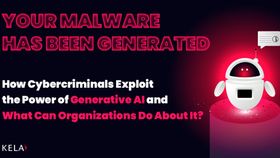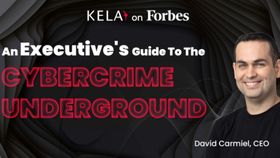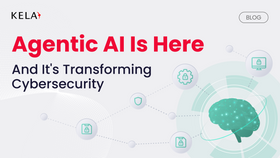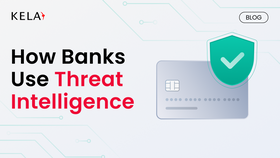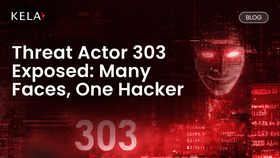Darknet Markets Explained: Navigating the Hidden Web
Learn how darknet markets function and the challenges they present to cybersecurity, shedding light on the hidden side of the internet.
Published May 15, 2025
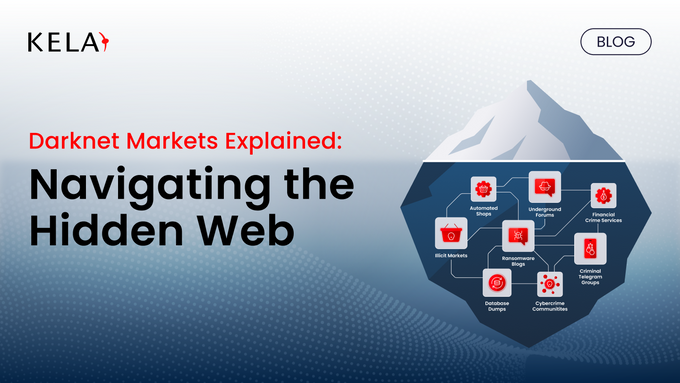
No time to read? Listen to the article here:
The darknet is a mysterious and often misunderstood part of the internet, attracting both intrigue and concern. Darknet markets, in particular, have gained attention for their role in facilitating the exchange of illicit goods and services. Despite their controversial nature, these marketplaces continue to evolve, offering a glimpse into the darker side of online commerce. As cyber threat intelligence professionals monitor these markets, they gain insights into emerging threats and malicious activities that can impact organizations and individuals.
In this blog, we’ll take a closer look at how these hidden markets operate and the implications they have for cybersecurity and law enforcement.
» Skip to the solution: Try KELA Cyber for free
What Is a Darknet Market?
A darknet market is a commercial website operating on the dark web, accessible only through specific software like the Tor browser. These markets facilitate anonymous transactions, primarily involving illegal goods and services.
Common Illegal Items
- Illicit drugs
- Stolen financial information
- Personal login credentials
- Malware
- Forged identification documents
- Hacked gaming accounts and in-game assets
» Learn how to reduce damage from info-stealing malware
Exploitation of Anonymity for Harm
Some areas of the darknet go beyond fraud and narcotics, exploiting anonymity for far more disturbing purposes:
- Child sexual abuse material (CSAM): Typically found on dedicated hidden forums, this is one of the most severe and universally condemned misuses of the darknet’s infrastructure.
- Contract killings: Listings offering assassination services appear from time to time but are widely believed to be scams aimed at stealing cryptocurrency.
- Terrorist content: Hidden forums sometimes host discussions around extremist ideologies and how to source materials for violent acts.
- Weapons trade: The unregulated sale of firearms and explosives adds another layer of risk and highlights the morally indefensible side of darknet activity.
» Find out if darknet markets are going out of business, and what will happen next
Surface Web vs. Deep Web vs. Darknet
| Category | Surface Web | Deep Web | Darknet |
|---|---|---|---|
| Access | Surface web marketplaces are open to everyone. You just need internet access and a standard browser. | Deep web marketplaces aren’t public—you need login credentials or permission to get in. | Darknet markets are hidden and need special software like Tor and a .onion address to access. |
| Search Engine Visibility | These sites show up in Google, Bing, or any regular search engine. | Deep web content isn’t indexed, so you won’t find it through a normal search. | Darknet content is completely unsearchable through standard engines. |
| Browser Requirements | You can use any regular browser like Chrome, Safari, or Firefox. | Deep web platforms also use regular browsers, but they’re usually behind login walls. | You need a privacy-focused browser like Tor to even reach darknet markets. |
| Content Examples | Anything from clothes to electronics to blog articles—completely legal and public. | Things like subscription databases, internal work portals, or medical records. | You’ll find listings for drugs, leaked credentials, access to corporate networks, hacking services, and more. |
| Privacy & Traceability | Very traceable—your activity is usually logged and linked to your real identity. | Still traceable but more restricted—often tied to your login or account. | Designed to hide both user and server identities, making activity very hard to trace. |
| Legality | Entirely legal and regulated. | Mostly legal; private or sensitive in nature. | Mostly illegal or operating in legal grey areas. |
» Here are the most targeted entry points by hackers
The History of Darknet Marketplaces
Darknet marketplaces emerged around 2011, with Silk Road setting the standard for how these platforms operate. Built on Tor, these sites mask IP addresses by routing traffic through encrypted relays, ensuring anonymity for both buyers and sellers. Bitcoin was initially used to process payments, offering pseudonymity rather than full anonymity.
Rise and Fall of Silk Road
Silk Road quickly grew into the largest darknet market, handling hundreds of millions in transactions. But in 2013, law enforcement traced Bitcoin activity, monitored DPR's forum posts, and exploited server vulnerabilities to identify Ross Ulbricht. He was arrested in a San Francisco library while logged in as site admin.
What Followed
Despite Silk Road’s shutdown, the model survived. Markets like AlphaBay and Hansa adopted stronger encryption and expanded offerings to include hacking tools and stolen data. However, these platforms often faced law enforcement takedowns, technical issues, or exit scams, where operators vanished with user funds.
Primary Risks for Users of Darknet Marketplaces
- Scams: Users frequently encounter scams where vendors take payment without delivering goods. "Exit scams" pose a greater threat, as market administrators may shut down sites and abscond with funds held in escrow, leading to substantial collective losses without recourse.
- Law enforcement action: Engaging in the buying or selling of illegal items, carries a significant risk of arrest. Law enforcement agencies monitor markets, trace cryptocurrency transactions, intercept packages, and conduct large-scale raids. Seized user data often results in identification and prosecution.
- Malware and phishing attacks: Users are vulnerable to malware aimed at stealing cryptocurrency or market credentials through fake login pages or malicious downloads. Compromised accounts can lead to theft of funds and sensitive personal information.
- Doxxing/compromised anonymity: Operational security mistakes, such as reusing usernames or leaking personal data, can expose a user's identity or location. Malicious actors often exploit this information to harass, extort, or sell it to criminal networks.
- Harmful or fake goods: Buyers risk receiving low-quality, counterfeit, or dangerously adulterated products, particularly drugs, or non-functional digital items. This poses financial losses and severe health risks, as quality control relies on vendor reputation systems in an unregulated environment.
» Discover why you need cyber threat intelligence for your organization
Ethical and Legal Boundaries in Monitoring Darknet Marketplaces
Cybersecurity companies and researchers monitoring darknet markets face legal and ethical restrictions. Legally, they are limited to observing publicly accessible areas using tools like the Tor browser, without engaging in unauthorized access or illegal transactions.
Ethically, they must minimize harm, responsibly handle any stolen or sensitive data (often notifying victims or law enforcement), avoid entrapment, and maintain research integrity.
Legal Boundaries
- Computer Fraud and Abuse Act (CFAA): This law restricts unauthorized access to computer systems, meaning that researchers can only observe publicly available information without participating in illegal activities.
- Passive observation: Researchers are restricted to monitoring only the publicly accessible parts of darknet marketplaces, without any involvement in transactions or unauthorized actions.
- International jurisdictions: Different countries have varying laws, making it challenging to monitor darknet markets across borders, as some actions may be legal in one jurisdiction but illegal in another.
» Concerned about the future? See these trends shaping the future of CTI
Tools Cybersecurity Professionals Use to Track Darknet Activity
OSINT
- Open Source Intelligence (OSINT) forms a core component, utilizing specialized tools like web crawlers and scrapers to navigate Tor hidden services and systematically collect data from forums and marketplaces.
HUMINT
- Human Intelligence (HUMINT) enhances insights through source cultivation and undercover personas within these hidden communities.
TECHINT
- Technical Intelligence (TECHINT) involves analyzing malware samples to understand their functionality and impact on systems, helping experts track malicious activity and identify potential vulnerabilities that could be exploited by adversaries.
FININT
- Financial Intelligence (FININT) is used to trace cryptocurrency wallet addresses and transactions, allowing cybersecurity experts to track illicit financial flows and link them to darknet activities, which is vital for uncovering the financial backing of cybercriminals.
SIGINT
- Signals Intelligence (SIGINT) focuses on intercepting communications related to darknet activities.
- State-level agencies or cybersecurity firms use SIGINT to monitor and analyze adversary communications, helping them gain insights into their plans and tactics.
MASINT
- Measurement and Signature Intelligence (MASINT)is used to identify unique technical signatures, such as digital footprints, that help track and identify darknet activities.
- This type of intelligence is key to understanding the underlying technical aspects of darknet operations.
» Understand what is the role of a threat intelligence analyst
How KELA Cyber Supports You in Darknet Monitoring and Risk Mitigation
At KELA, we help you identify and mitigate risks by providing actionable intelligence from the darknet. Our solutions empower you to monitor illicit darknet marketplaces and track emerging threats, ensuring you can take proactive measures to protect your organization and reputation.
Key Support Areas
- Threat identification: We detect potential threats targeting your organization, including leaked credentials, brand mentions in illicit forums, and discussions on stolen data or vulnerabilities.
- Monitoring & risk mitigation: We continuously monitor the cybercrime underground for compromised assets related to your organization and third-party vendors, allowing you to take proactive steps to prevent fraud and protect your brand reputation.
- Threat identification: We provide intelligence on threat actors, including their tactics, techniques, procedures, and connections, helping you with investigations into illicit activities.
- Monitoring illicit marketplaces: Our platform tracks criminal activity in darknet markets, identifying key vendors and operational patterns, supporting law enforcement with evidence collection and operational planning.
We deliver contextualized, actionable intelligence through our dedicated platform or API integration, ensuring that you can respond effectively to darknet threats.
» Ready to get started? Contact us to learn more about our cyber threat intelligence services

